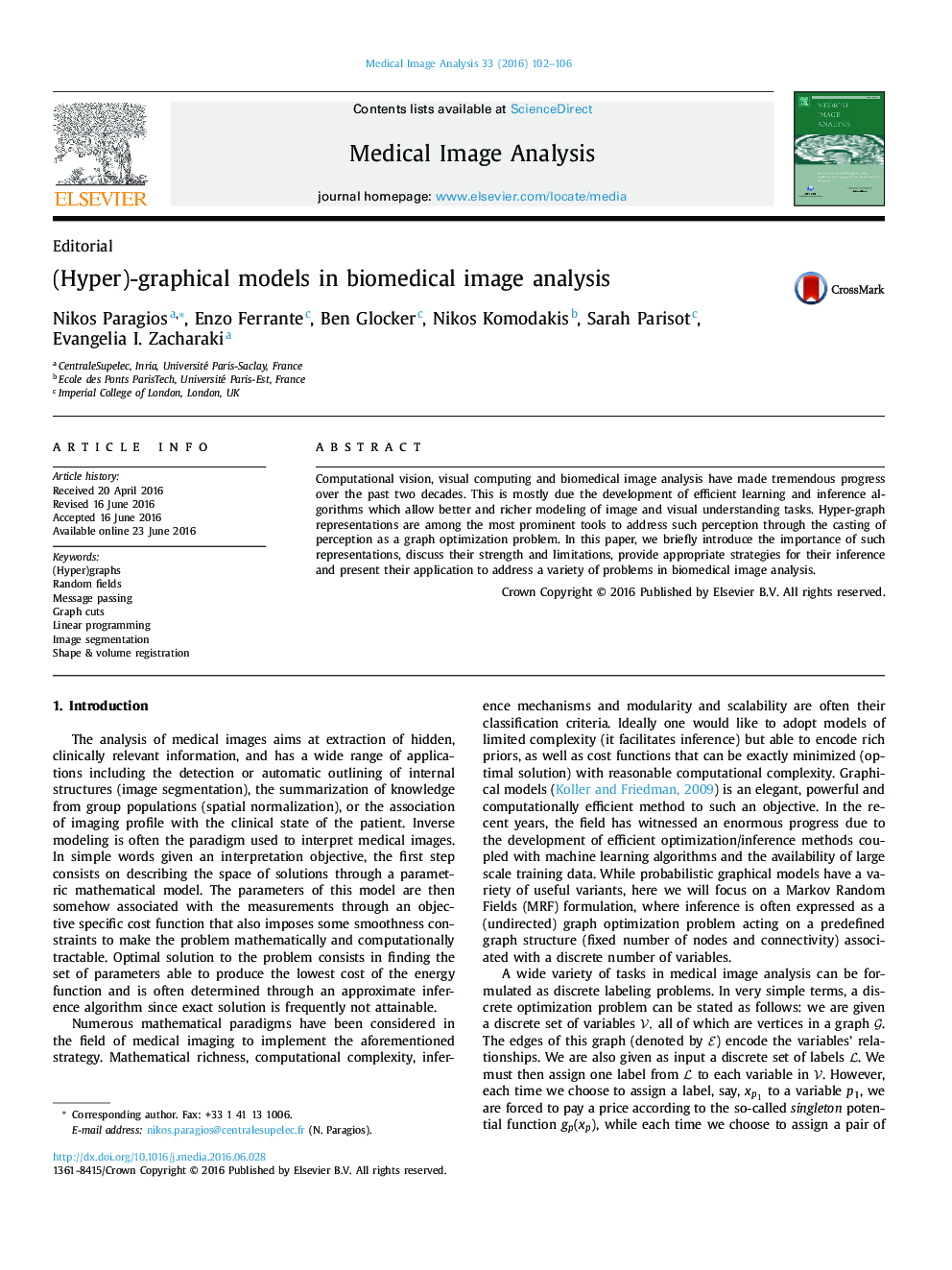| Article ID | Journal | Published Year | Pages | File Type |
|---|---|---|---|---|
| 4953478 | Medical Image Analysis | 2016 | 5 Pages |
â¢We briefly present the interest of graphical models in biomedical imaging.â¢We present/briefly review the state of the art optimization algorithms for their inference.â¢We provide a snapshot of methods of increasing complexity/richness to address core biomedical imaging problems.â¢We provide some insights as it concerns future developments and impact of these methods for the decade to come.
Computational vision, visual computing and biomedical image analysis have made tremendous progress over the past two decades. This is mostly due the development of efficient learning and inference algorithms which allow better and richer modeling of image and visual understanding tasks. Hyper-graph representations are among the most prominent tools to address such perception through the casting of perception as a graph optimization problem. In this paper, we briefly introduce the importance of such representations, discuss their strength and limitations, provide appropriate strategies for their inference and present their application to address a variety of problems in biomedical image analysis.
